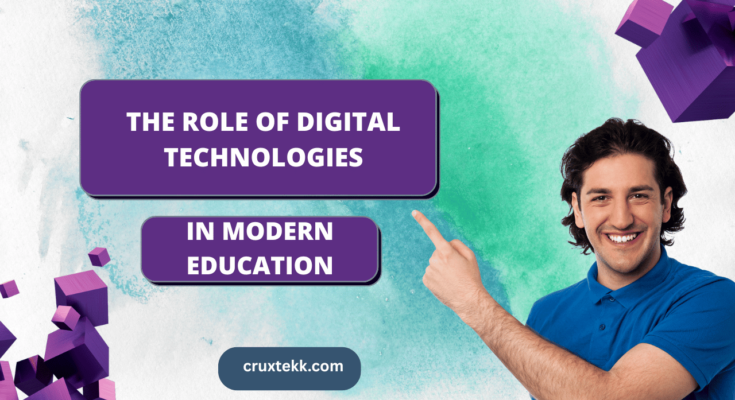Digital technologies have revolutionized various sectors, and education is no exception. From online learning platforms to artificial intelligence (AI)-powered tutors, digital tools are enhancing the learning experience in unprecedented ways. This article explores how digital technologies play a crucial role in modern education, improving accessibility, engagement, and learning outcomes.
The Transformation of Education Through Digital Technologies
1. Enhanced Accessibility and Inclusivity
One of the biggest advantages of digital technology in education is increased accessibility. Online courses, digital textbooks, and cloud-based learning platforms make education available to students worldwide. Additionally, assistive technologies like screen readers and speech-to-text applications enable students with disabilities to learn more effectively.
2. Engagement and Interactive Learning
Traditional learning methods can sometimes be monotonous, leading to disengagement. Digital tools like gamified learning apps, virtual reality (VR) simulations, and interactive whiteboards make learning more engaging. Students can explore complex topics through immersive experiences, leading to better comprehension and retention.
3. Personalized Learning with AI and Data Analytics
Artificial intelligence and data analytics enable personalized learning experiences. AI-powered tutors analyze students’ strengths and weaknesses, providing customized content and recommendations. Adaptive learning platforms adjust the pace and difficulty of lessons based on individual progress, ensuring efficient learning.
4. Collaboration and Communication
Digital tools have made collaboration easier than ever. Platforms like Google Classroom, Microsoft Teams, and Zoom facilitate real-time communication between students and teachers. Online discussion forums, group projects, and shared documents allow for seamless collaboration, fostering teamwork and problem-solving skills.
5. E-learning and Remote Education
The rise of e-learning has transformed the education landscape, especially during the COVID-19 pandemic. Universities and schools adopted virtual classrooms, ensuring uninterrupted learning. Massive Open Online Courses (MOOCs) and e-learning platforms like Coursera, Udemy, and Khan Academy provide high-quality education to learners worldwide.
6. Efficient Assessment and Feedback
Digital assessment tools enable quick and efficient evaluation of student performance. Automated grading systems, plagiarism checkers, and AI-driven feedback mechanisms provide instant insights, helping students improve their learning outcomes. Educators can also track progress through analytics dashboards, making data-driven decisions.
Challenges and Future Prospects
Despite its advantages, integrating digital technologies into education comes with challenges. Issues such as the digital divide, cybersecurity concerns, and the need for teacher training must be addressed. However, with continuous advancements in technology and policy improvements, digital education will continue to evolve, making learning more effective and inclusive.
Conclusion
Digital technologies have significantly reshaped modern education, making learning more accessible, engaging, and personalized. As technology continues to evolve, its role in education will only expand, paving the way for a more innovative and inclusive learning environment. Embracing these advancements will help educators and students thrive in the digital age.




